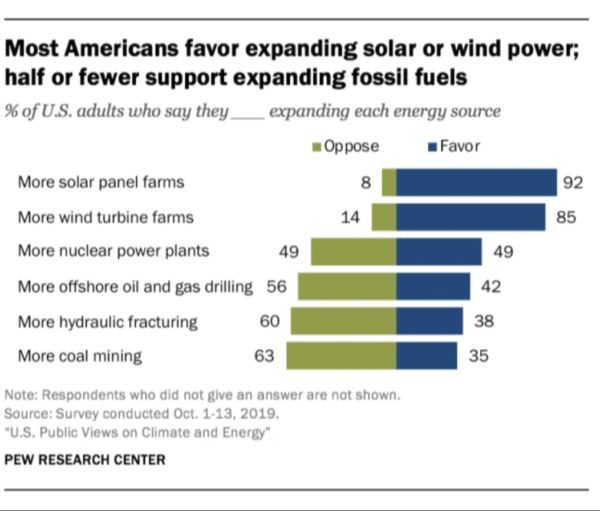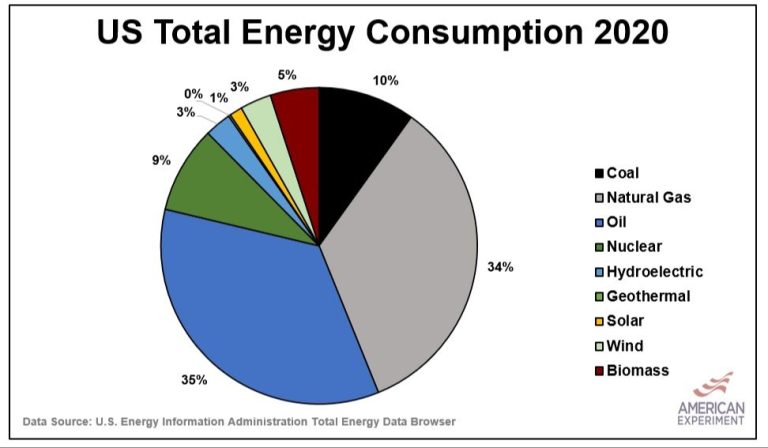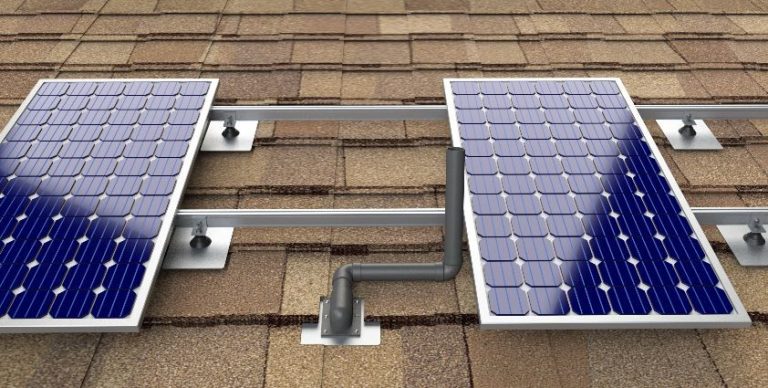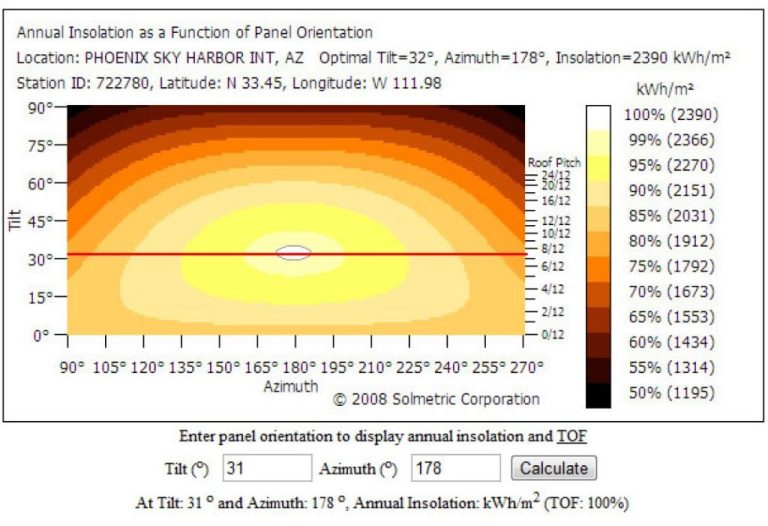Solar Battery Storage Options For Homes
As the cost of electricity continues to rise and concerns about climate change grow, many homeowners are turning to solar energy as a sustainable and cost-effective solution. While solar panel systems have been around for years, advancements in technology now allow for the storage of excess energy generated by these panels through solar battery storage options. This has created a new wave of interest and possibilities for homeowners looking to reduce their carbon footprint and save money on their utility bills. In this blog post, we will delve into the world of solar battery storage options for homes, discussing what it is, how it works, its benefits and drawbacks, and some popular choices available in the market today. So if you’re considering making the switch to renewable energy or simply looking to upgrade your current system, keep reading to find out everything you need to know about residential solar battery storage.
Energy Planning For Day And Night Needs
One of the greatest advantages of solar battery storage options for homes is the ability to store excess energy generated during the day for use during the night when the sun is no longer shining. This makes it possible for homeowners to achieve a higher degree of energy independence, reducing their reliance on the grid and their exposure to fluctuating energy prices.
In order to plan for day and night energy needs with solar battery storage, it is important to consider a number of factors such as the size of the solar panel system, the capacity of the battery storage unit, and the energy consumption patterns of the household. The size of the solar panel system will determine how much energy can be generated during the day, while the capacity of the battery storage unit will determine how much energy can be stored for later use. Monitoring energy consumption patterns is also crucial for optimizing energy usage and reducing waste.
Advancements in technology have made it possible for homeowners to access real-time data on their energy usage, allowing them to adjust their energy consumption habits accordingly. Many solar battery storage systems also come equipped with smart software that can predict energy usage patterns and automate energy distribution accordingly. This means that excess energy can be used to power household appliances during peak usage times, reducing the strain on the battery storage unit.
In terms of popular choices for solar battery storage, the Tesla Powerwall and LG Chem RESU are two of the most commonly used units. The Tesla Powerwall offers a storage capacity of 13.5 kilowatt-hours and can be stacked up to ten units for larger homes. The LG Chem RESU, on the other hand, offers a smaller storage capacity of 9.8 kilowatt-hours but is known for its reliability and durability.
Overall, energy planning for day and night needs with solar battery storage requires careful consideration of a number of factors. However, with the right system in place, homeowners can achieve greater energy independence and reduce their carbon footprint.
Backup Power Options For Emergencies
In addition to providing a sustainable and cost-effective solution for everyday energy usage, solar battery storage options for homes can also serve as a reliable backup power source during emergencies. Power outages due to extreme weather events or other unforeseen circumstances can be particularly disruptive, leaving homeowners without electricity for extended periods of time. However, with a solar battery storage system in place, homeowners can rest assured that they will have access to backup power when they need it most.
One of the key benefits of solar battery backup systems is their ability to operate autonomously, without the need for external power sources. This is particularly important during emergencies where grid power may not be available or may be unreliable. In these situations, solar battery backup systems can provide a reliable source of electricity to power essential appliances such as refrigerators, medical equipment, and communication devices.
To ensure that the backup power system is reliable and effective, it is important to consider factors such as the capacity of the battery storage unit, the efficiency of the solar panels, and the overall design of the system. The capacity of the battery storage unit will determine how much energy can be stored for later use, while the efficiency of the solar panels will determine how quickly the batteries can be charged during daylight hours. The overall design of the system will also play a critical role in ensuring that the backup power source is able to meet the specific needs of the household during an emergency.
Popular choices for backup power solar battery storage systems include the Generac PWRcell and Enphase Energy Encharge. The Generac PWRcell offers a storage capacity of up to 18 kilowatt-hours and is capable of providing backup power to essential appliances for several days. The Enphase Energy Encharge is an all-in-one solar battery backup system that can be easily installed and configured to meet the specific needs of the household.
In addition to providing a reliable source of backup power during emergencies, solar battery storage systems can also reduce the demand for fossil fuel-powered backup generators, which can be noisy, expensive to operate, and emit harmful pollutants. By making the switch to solar battery backup systems, homeowners can not only ensure that they have access to reliable backup power when they need it, but also reduce their carbon footprint and promote a more sustainable future.
Battery Backup Systems For Whole Home Or Partial Use
When it comes to solar battery storage options for homes, homeowners have the choice of either whole home or partial use battery backup systems. A whole home battery backup system is designed to power the entire home during a power outage, while a partial use system is designed to power essential appliances and equipment only.
Whole home battery backup systems typically have larger battery storage units and can support higher capacity power outputs. These systems are ideal for homeowners who want complete peace of mind during power outages and are willing to invest in a comprehensive system that can power all their household appliances and electronics. Popular choices for whole home battery backup systems include the Tesla Powerwall and the LG Chem RESU.
Partial use battery backup systems, on the other hand, are typically more affordable and can still provide emergency power to essential appliances such as refrigerators, medical equipment, and communication devices. These systems are ideal for homeowners who want a more budget-friendly option that can still provide sufficient backup power during emergencies. Popular choices for partial use battery backup systems include the Goal Zero Yeti and Jackery Explorer.
It is important to note that the size of the battery storage unit and the efficiency of the solar panels will determine the capacity and charging time of the battery backup system. Homeowners should carefully consider their energy needs and budget when selecting a battery backup system and consult with a reputable solar installer to ensure that the system is properly designed and installed for optimal performance.
In addition to providing backup power during emergencies, solar battery storage systems can also help homeowners save money on their utility bills by reducing their reliance on grid power. By storing excess solar energy generated during the day, homeowners can use this energy to power their homes at night when electricity rates are typically higher.
Overall, solar battery storage options for homes provide a sustainable and cost-effective solution for homeowners looking to reduce their carbon footprint, save money on their utility bills, and ensure reliable backup power during emergencies. With a wide range of systems available in the market today, homeowners can easily find a solution that meets their specific needs and budget.
Cost Comparisons Of Battery Brands And Installation

When considering options for solar battery storage for your home, cost comparisons of battery brands and installation are important factors to take into account. Prices can vary greatly depending on the brand and specific system chosen, as well as on the level of complexity involved in the installation process.
One of the most popular and recognizable brands in this industry is Tesla, with their Powerwall battery. The Powerwall is a high-capacity lithium-ion battery with a sleek design and impressive performance specs. It can store up to 14 kWh of energy and has a maximum power output of 7 kW, making it a great option for homes with high energy demands. The cost of a single Powerwall unit typically ranges from $7,000 to $10,000, which includes the battery, installation, and supporting hardware.
Another well-known brand in the solar battery storage market is LG Chem, with their RESU battery series. These batteries are also lithium-ion and come in a range of capacities, from 3.3 kWh to 19.6 kWh. The RESU batteries are designed for indoor or outdoor installation and can provide up to 7 kW of power output. The cost of an LG Chem RESU battery unit ranges from $5,000 to $8,000, including installation and hardware.
For homeowners on a tighter budget, there are more affordable options available, such as Goal Zero’s Yeti series. These portable solar power stations come in a range of sizes and can charge from solar panels, wall outlets, or a car 12V adapter. The larger Yeti models have a battery capacity of up to 3,048 Wh and a maximum power output of 2,500 W. The price of the Yeti series ranges from $299 to $3,000, depending on the size and capacity needed.
Jackery Explorer is another option for homeowners looking for a lower-priced solar battery storage system. The Explorer series comes in portable and stationary models and has a range of capacities, from 160 Wh to 2,000 Wh. The stationary model can be wall-mounted and is capable of powering essential appliances during emergency outages. The prices for the Jackery Explorer vary depending on the specific model and capacity, with prices ranging from $199 to $1,499.
When it comes to installation costs, the price can vary depending on a number of factors, such as the complexity of the system, the location of the installation, and the installer’s pricing structure. Some installers may charge a flat fee for the installation, while others may charge based on the complexity and size of the system. It’s important to shop around and obtain multiple quotes from reputable installers to ensure that you are getting a fair price and quality installation.
Maintenance And Warranty Protection Options
When investing in a solar battery storage system for home, it is important to consider maintenance and warranty protection options to ensure long-term reliability. As with any other electronic device, the batteries in solar storage systems must be maintained to ensure optimal performance. In most cases, routine maintenance includes checking the battery’s charge levels, cleaning the battery, and inspecting for signs of wear or damage. It is best to consult the manufacturer’s maintenance guidelines to ensure that you do not void your warranty or damage the battery.
In terms of warranty protection, most solar battery storage systems come with a manufacturer’s warranty that covers the product for a specific period of time, usually between 5 and 10 years. The duration of the warranty may vary depending on the brand and type of battery. During this period, the manufacturer will cover the cost of repairs or replacements for any defects or malfunctions that occur within the warranty period. It is important to note that the warranty may not cover damages that occur due to misuse, neglect, or normal wear and tear.
Some manufacturers also offer extended warranties for an additional fee, which may cover the cost of repairs or replacements beyond the standard warranty period. Additionally, some installers may offer their own warranty for the installation and labor required to install the battery storage system. It is important to read the warranty terms and conditions carefully to understand what is included and excluded from coverage.
To ensure that your solar battery storage system remains in good working order, it is recommended to have the system inspected by a professional installer or technician at least once a year. They can provide insights into any necessary repairs or maintenance needed to ensure that the system continues to function efficiently and thoroughly.
Overall, when investing in a solar battery storage system for your home, it is important to consider both maintenance and warranty protection options to protect your investment and ensure long-term reliability.
Sizing Batteries Correctly For Household Electric Load
Another important aspect to consider when investing in a solar battery storage system for home is sizing the batteries correctly for the household electric load. This is because the battery capacity directly affects the amount of energy that can be stored and used during times of low or no sunshine.
To determine the appropriate battery size for your household electric load, it is necessary to first calculate your energy consumption patterns. This can be done by reviewing your utility bills and analyzing the average amount of energy consumed per day, week, and month. This information is used in conjunction with weather data to estimate the amount of solar energy that will be generated by the solar panel system on a daily basis.
Once these estimates are made, battery size can be calculated using several different factors, including peak load requirements, depth of discharge, and expected battery life. Peak load requirements refer to the maximum amount of energy needed to power the house at any one time, while depth of discharge refers to the amount of energy that can be safely drawn from the battery without causing damage or reducing the battery’s lifespan. Expected battery life refers to the number of years the battery is expected to function properly before needing to be replaced.
It is important to note that undersizing the battery can result in a lack of energy storage capacity, while oversizing the battery can lead to unnecessary expenses in terms of upfront costs and ongoing maintenance. Additionally, it is important to consider any future changes to the household’s energy consumption patterns, such as the addition of new appliances, as this can affect the battery’s capacity needs.
In order to ensure that the battery size is appropriately matched to the household’s energy needs, it is recommended to work with a solar installer or technician who can provide expert guidance and analysis. Ultimately, taking the time to correctly size the battery will help ensure that the household’s energy needs are met while also maximizing the benefits of renewable energy.
Government Rebates For Going Solar And Saving Energy
Government rebates and incentives are another important factor to consider when looking to invest in solar battery storage options for homes. In an effort to encourage the adoption of renewable energy, many governments around the world offer financial incentives and tax credits to homeowners who install solar panels and battery storage systems.
For example, in the United States, there is a federal tax credit for solar energy systems that allows homeowners to deduct up to 26% of the cost of their system from their federal taxes. Some states also offer additional incentives, such as rebates or net metering programs, which allow homeowners to receive credit for excess energy they generate and feed back into the grid.
In Australia, the government has implemented the Small-scale Renewable Energy Scheme (SRES), which provides financial incentives for homeowners who install eligible small-scale renewable energy systems, including solar panel systems and battery storage. The amount of the rebate varies depending on the size and capacity of the system, as well as the location and date of installation.
In addition to these government rebates, switching to solar energy and installing a battery storage system can also result in significant savings on monthly electricity bills. By generating and storing their own renewable energy, homeowners can reduce or even eliminate their reliance on traditional utility companies, which can result in long-term cost savings.
Overall, when considering solar battery storage options for homes, it is important to research and take advantage of any available government rebates and incentives. Not only can this help offset the upfront costs of installation, but it can also result in ongoing savings on monthly utility bills and a reduced carbon footprint.
Financing Programs Available For Purchase And Installation
In addition to government rebates and incentives, there are also financing programs available for homeowners looking to purchase and install solar battery storage systems. These financing options can help make the upfront costs more manageable and affordable for those who may not have the funds to pay for the system outright.
One popular financing option is a solar loan, which allows homeowners to borrow money specifically for the installation of a solar panel and battery storage system. These loans often have low interest rates and flexible repayment terms, making them an attractive option for those looking to make the switch to renewable energy without breaking the bank.
Another financing option is a solar lease or power purchase agreement (PPA), which allows homeowners to lease the solar panel and battery storage system from a third-party provider. With a solar lease, homeowners pay a fixed monthly fee for the use of the system, while a PPA allows homeowners to purchase the energy generated by the system at a fixed rate. Both of these financing options typically require little to no upfront costs and can result in immediate energy savings.
It is important to carefully research and compare financing options to ensure that you choose the best option for your individual needs and financial situation. Some factors to consider when choosing a financing program may include interest rates, repayment terms, fees, and eligibility requirements.
Overall, financing programs can provide a viable solution for homeowners looking to invest in solar battery storage options for their homes. By taking advantage of available financing options, homeowners can enjoy the benefits of renewable energy and a reduced carbon footprint, all while saving money on their monthly utility bills.
Community Solar Subscriptions When Space Is Limited
In addition to government rebates and financing options for solar battery storage systems, there is another innovative solution for homeowners with limited space or inability to install solar panels on their own property – community solar subscriptions. Community solar projects allow customers to purchase or subscribe to a portion of a larger off-site solar installation and receive credit on their utility bill for the energy produced by their portion of the system.
Community solar projects have several advantages over traditional rooftop solar systems. Firstly, they allow homeowners who do not have access to suitable rooftops or land to benefit from solar energy. In addition, community solar projects enable greater economies of scale for solar developers, thereby lowering costs and reducing the carbon footprint of the electricity system. Furthermore, community solar projects also increase community engagement and education about the benefits of solar energy.
Community solar subscriptions offer flexible options for homeowners with varying levels of energy needs. Customers can choose to purchase or lease their portion of the community solar installation, and subscriptions can be scaled up or down depending on changes in energy demand. Some community solar projects even offer the option of using the credits from the solar energy production to offset carbon emissions from other sources such as transportation or heating.
Despite the benefits of community solar subscriptions, there are some potential drawbacks to consider. For instance, customers may not have control over the location or quality of the solar installation. Additionally, community solar subscriptions may have upfront costs or long-term commitments that could affect a homeowner’s financial situation.
Overall, community solar subscriptions are an innovative solution for homeowners who want to access solar energy but may have spatial or financial limitations. As with any investment, it is crucial to research and compare options carefully to ensure the best fit for individual needs and circumstances. With community solar subscriptions, homeowners can participate in the growth of renewable energy and reduce their carbon footprint while enjoying the benefits of cost savings and flexibility.
Monitoring Energy Use And Savings Over Time
Monitoring energy use and savings over time is a crucial aspect of having a solar battery storage system or subscribing to a community solar project. It allows homeowners to track their energy consumption patterns and identify areas where they can reduce their energy usage further. There are many tools available on the market that can help with monitoring energy use and savings for solar energy systems.
For homes with solar battery storage systems, the most reliable way to measure energy use and savings is by installing a real-time energy monitoring system. These systems are connected to both the solar panel system and the home’s energy usage meter, providing real-time data on the amount of energy generated and consumed on a daily, weekly, or monthly basis. This data can be accessed through a user interface on a computer or mobile device, making it easy for homeowners to track their energy usage, savings, and carbon footprint contributions.
In addition to real-time energy monitoring systems, there are also many energy tracking apps available on the market. These apps allow homeowners to monitor their energy usage and savings from solar panel systems and community solar subscriptions. Some popular energy tracking apps include Sense, SolarEdge, and Enphase.
Investing in solar battery storage systems or subscribing to community solar projects can provide significant cost savings on utility bills. However, it is important to monitor energy use and savings closely over time to ensure that these systems are providing the expected benefits. By monitoring energy use and savings over time, homeowners can adjust their energy consumption patterns to optimize savings, reduce their carbon footprint contribution, and increase overall sustainability.
Conclusion
In conclusion, energy planning for day and night needs is crucial for maintaining a sustainable and cost-effective household. From backup power options for emergencies to battery backup systems, there are various ways to ensure uninterrupted power supply. When considering costs, it’s important to also compare different battery brands and their installation fees. Additionally, maintenance and warranty protection options should be carefully considered when making a decision. Most importantly, correctly sizing batteries according to your household’s electric load is key in maximizing efficiency and savings. And let’s not forget the government rebates and financing programs available for those looking to go solar and save energy in the long run. For those with limited space, community solar subscriptions are a great alternative to consider. With the ability to monitor energy use and savings over time, investing in these solutions not only benefits your wallet but also the environment. So why wait? Start your journey towards sustainable energy planning today!






